There is good pain and bad pain. Good pain stops when you stop. It is generally mild, diffuses and doesn’t affect quality of movement. Bad pain does not stop when you stop. It can get worse during or after activity. It can be sharp in nature, and significant enough to force you to change your gait whether you realize it or not.
Keys to Staying Injury Free
Roll Away Your Injuries – Anthony Inzirillo ATC & Charm City Run Manager
Let's stay injury free this weekend. Good luck to all those participating in the Baltimore Running Festival!
Brett Clark, a Physical Therapist at LifeStrength PT, gives his best advice to staying injury free while training.
One of the most common questions I get asked while working the floor at Charm City Run is “what is the best way to stay injury free?” or “how can I get rid of the injuries that are holding me back?”. Well, no one has the perfect answer to those questions, but there are some ways to keep the odds on your side. Flexibility is something that every runner can work on because the running stride is such a limited range of motion.
In today’s world there are many ways of stretching whether it is static, dynamic, or proprioceptive neuromuscular facilitation. A new type of stretch has recently hit the exercise therapy world called myofascial release, which is a technique being introduced by many healthcare professionals. A professional usually performs myofascial release on a patient but with the use of some numerous tools (e.g. foam roller, tennis ball, golf ball, the stick) the patient can achieve myofascial release on their own. While all of these tools are beneficial, the foam roller is the most efficient, versatile, and easy to use. The foam roller is a great instrument to use when trying to gain muscle relaxation and extensibility.
The concept and physiology behind foam rolling (self-myofascial release), stems from acupressure. Acupressure is a technique in which physical pressure is applied directly to acupoints that are located throughout the body. Acupoints can commonly tense up causing the formation of a trigger point. When irritated, the fibrous tissue forms scars decreasing the function of the fascia.
Foam rolling focuses on applying physical pressure onto myofascial tissue restrictions. The pressure gets rid of associated pain, increases circulation, and increases motion by activating the stretch reflex of the muscles and overlying fascia. Reduction in soft tissue tension decreases pain, restores normal muscle length tension relationships and improves function.
The use of foam rollers is fast, easy and cheap. A foam roller goes for around $25, which is much cheaper than a personal massage therapist. The recommended use for a foam roller is one to two minutes on each muscle. When foam rolling, it is important that the muscle is felt before hand in order to find the trigger point that is the source of pain. While rolling the runner should stop for 10-15 seconds over the trigger point to try and achieve a muscle spindle release.
The foam roller is most commonly used for the lower extremity muscles but can be used for almost every muscle throughout the body. A foam roller can be used either before or after an activity starts. It is important that before foam rolling a general warm up be performed (bike, light jog, jumping jacks, etc.), as a muscle should not be stretched cold.
In this day and age runners are always looking for the competitive edge. Flexibility and muscle function are detrimental aspects to the performance of all athletes. The foam roller combined with a dynamic warm up can be used as a great tool to help runners to stay healthy and achieve greatness.






